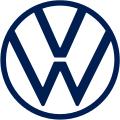List of discontinued Volkswagen Group diesel engines. The compression-ignition diesel engines listed below were formerly used by various marques of automobiles and commercial vehicles of the German automotive concern, Volkswagen Group, [1] and also in Volkswagen Marine [2] and Volkswagen Industrial Motor [3] applications, but are now discontinued. All listed engines operate on the four-stroke cycle, and unless stated otherwise, use a wet sump lubrication system, and are water-cooled. [1]
Contents
- Two-cylinder diesels
- 0.8 R2 TDI
- Three-cylinder diesels
- 1.2 R3 PD TDI 3L
- Four-cylinder EA111 diesels
- 1.3 R4 D 33kW
- 1.4 R4 D 35kW
- Four-cylinder EA827 diesels
- 1.5 R4 D 33-37kW
- 1.6 R4 D 36-40kW
- 1.6 R4 D 40kW
- 1.6 R4 TD 44-51kW
- 1.6 R4 TD 51kW
- 1.6 R4 TD 59kW
- 1.7 R4 D 42kW
- 1.7 R4 SDI 44kW
- 1.9 R4 D 44-50kW
- 1.9 R4 TD 55kW
- Four-cylinder PERKINS and MWM diesels
- 2.7 R4 D 48kW
- 2.8 R4 12v TDI 92-116kW
- Five-cylinder diesels
- 2.0 R5 D 51kW
- 2.0 R5 TD 66kW
- 2.0 R5 TD 75kW
- 2.4 R5 D 55-60kW
- 2.5 R5 TDI 85-103kW
- Six-cylinder diesels
- 2.4 R6 D24 51-60kW
- 2.4 R6 D24T 63-80kW
- 2.4 R6 D24TIC 70-90kW
- 2.5 V6 24v TDI 110-132kW
- Eight-cylinder diesels
- 3.3 V8 32v TDI CR 165kW
- 4.0 (Technically – 3.9 L) V8 32v TDI CR 202kW
- Ten-cylinder diesels
- 4.9/5.0 V10 TDI PD 230-258kW
- See also
- References
- External links
Since the Volkswagen Group is European, official internal combustion engine performance ratings are published using the International System of Units (commonly abbreviated "SI"), a modern form of the metric system of figures. Motor vehicle engines will have been tested by a Deutsches Institut für Normung (DIN) accredited testing facility, to either the original 80/1269/ EEC , or the later 1999/99/EC standards.[ citation needed ] The standard initial measuring unit for establishing the rated power output is the kilowatt (kW);[ citation needed ] and in their official literature, the power rating may be published in either kilowatts, metric horsepower ('Pferdestärke' in German, often abbreviated PS), or both. Power outputs may also include conversions to imperial units such as the horsepower (hp) for the United States and Canadian markets. (Conversions: one PS ≈ 735.5 watts (W), ≈ 0.98632 hp (SAE)). In case of conflict, the metric power figure of kilowatts (kW) will be stated as the primary figure of reference. For the turning force generated by the engine, the Newton metre (Nm) will be the reference figure of torque. Furthermore, in accordance with European automotive traditions, engines shall be listed in the following ascending order of preference:[ citation needed ]
- Number of cylinders,
- Engine displacement (in litres),
- Engine configuration, and
- Rated power output (in kilowatts).
The diesel engines which Volkswagen Group currently manufactured and installed in today's vehicles, and Marine and Industrial applications, can be found in the list of Volkswagen Group diesel engines article.
